D-Day: How Scotland shaped the toughest of fighters in its hills, lochs and glens
With its deep lochs, harsh mountain terrain and strong tidal forces, Scotland provided perfect conditions for preparations for D-Day with hundreds of thousands of troops flowing north of the border to embark on the toughest of training regimes.
With troops arriving from across the allied world, the comparatively sparse population also allowed the highly secretive manoeuvres to go largely unnoticed, with mock assaults on secluded beaches and live firing exercises in the hills part of the build up to June 6, 1944.
Advertisement
Hide AdAdvertisement
Hide AdSecluded Highland estates offered perfect cover for the activities of the soldiers, airmen and navy personnel due to take part in the largest military assault of its kind, with castles requisitioned from their owners and vast camps springing up in their grounds.
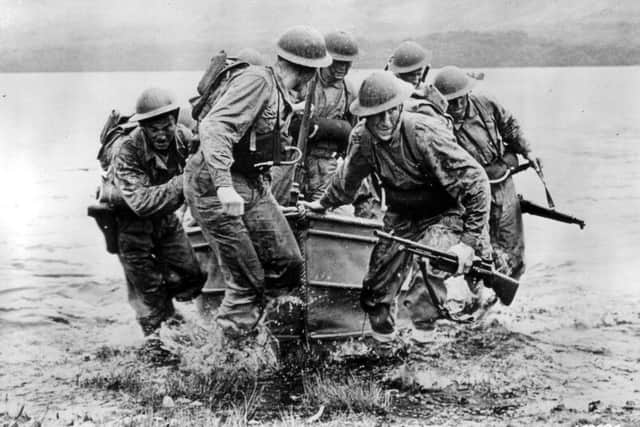

Author and historian Simon Forty has published a new book - D-Day UK: 100 Locations in Britain - which charts the locations in Scotland where the D-Day landings were masterminded.
Mr Forty said: "So many books about D-Day look at what happened on the other side of the Channel, but I don't think people necessarily realise that for three years Britain was an armed camp and everywhere was preparing for D-Day
"Scotland played an absolutely enormous role in this."
Mr Forty said there were a number of factors as to why.
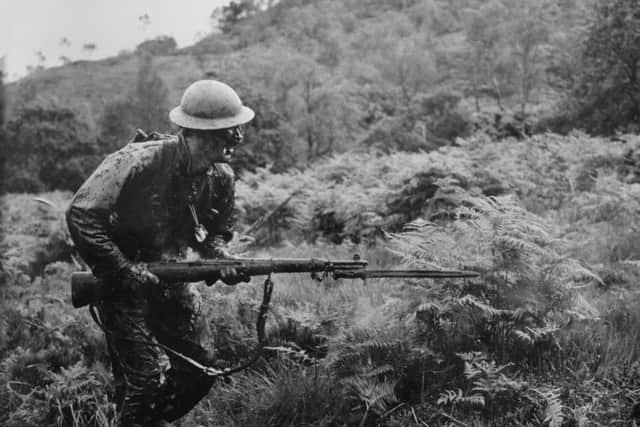

Inverary Castle in Argyll became central to preparations. It was here, on the shores of Loch Fyne, that 250,000 troops became versed in the movements that were to define D-Day - the use of smaller landing craft for beach assaults.
Practically every single soldier who took part in the D-Day campaign was to pass through the The No 1 Combined Training Centre (CTC) which was set up in the midst of the castle.
Mr Forty said: "You are looking at a quarter of a million troops passing through Inverary - around 15,000 going through the training at a time.
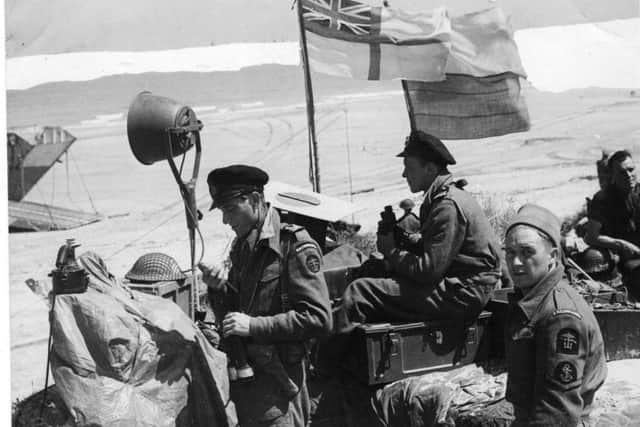

"Virtually everyone who landed in Normandy would have been at Inverary at some point.
"Without the training carried out there, the whole thing wouldn't have happened."
Advertisement
Hide AdAdvertisement
Hide AdBen Nevis, which sits around 18 miles from the castle, often posed the final challenge for seeking to wear the revered green beret during the historic assault of Normandy.
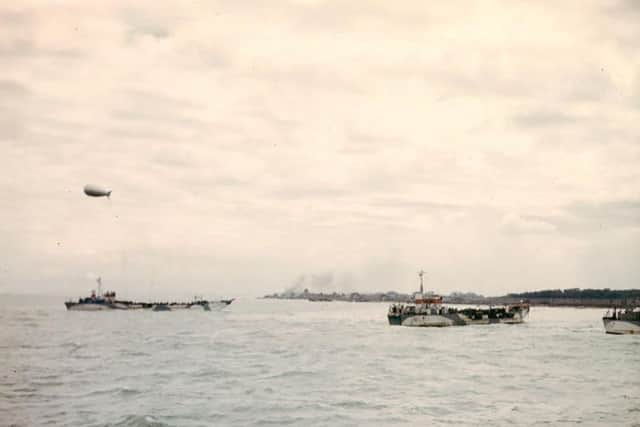

At Achnacarry, the manicured green lawn of the castle was replaced by a hard asphalt drill square with lines of Nissen huts built around the seat of Sir Donald Walter Cameron of Lochiel. The austere accommodation housed between 25 and 40 men and also served as dining halls, washing rooms and the canteen.
A sea of bell tents also formed around the castle as men poured in to prepare for the largest military assault of its kind with soldiers from the US Rangers, France, the Netherlands, Norway, Czechoslovakia, Poland, Belgium among those training here.
At the Highland estate, a number of "free Germans", among them many Jews, also stood among the ranks of assembled men.
Under overall charge was Lieutenant Colonel Charles Vaughan, a hardened First World War veteran who rose from the ranks and who 'accepted nothing but the best', from fitness to fieldcraft, Mr Forty said
"Much of the training focused on building personal strength as well as teamwork – there was an enormous amount of physical training, as well as tuition in ways to cross obstacles," he added.
The course itself – which was usually completed over six weeks - included a live-firing exercise where the participants had to make an opposed landing around the nearby village of Bunarkaig on Loch Lochy. Casualties were not uncommon.
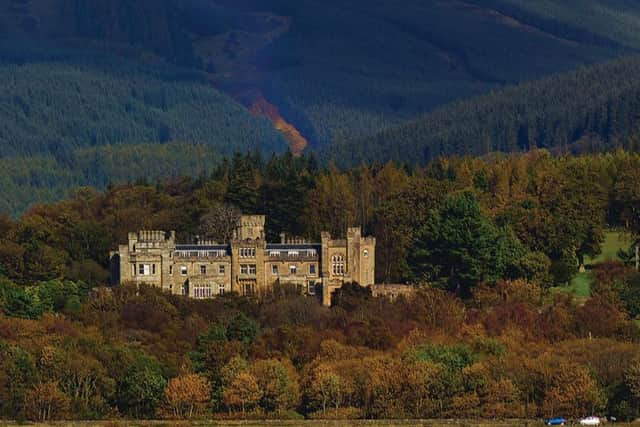

Indeed, gravestones could be found on the approach to Achnacarry Castle, some marked with the cause of death as live fire during training.
Advertisement
Hide AdAdvertisement
Hide AdOn D-Day itself, the 1st Special Service Brigade commanded by Lord Lovat, the charismatic Highland brigadier, fought its way into Ouistreham and to Pegasus Bridge, where it relieved 6th Airborne Division.
Meanwhile, the Royal Marines of the 4th Special Service Brigade fought on all three British and Canadian beaches, sustaining heavy casualties in the assault.
Ahead of the landings, Castle Toward, an early 19th Century Glasgow merchant's house near Dunoon on the Cowal Peninsula, was requisitioned to train soldiers in amphibious landings of larger landing craft.
The castle became HMS Brontosaurus during the preparations with both Winston Churchill and Lord Mountbatten visiting the training centre.
The surrounding deep waters offered an ideal practice ground for Royal Navy training in how to load and disembark tanks from the vessels, with the flat bottomed, square ended craft posing a separate set of challenges from conventional vessels with their sleek lines and heavy keels.
In November 1942, the ground force element from HMS Dundonald, who were based near Troon to train in beach signals and tank landings, was transferred to Castle Toward and the countdown to Operation Neptune intensified. RAF servicemen also shifted to the west coast for mock assaults on the beaches around Castle Torward.
With thousands of men coming and going from the training camps, the lightly populated stretches of the west coast provided good cover for the military manoeuvres.
Mr Forty said: "The beauty of being up in Scotland, a relatively quiet area far away from the main population centres in the south, mean there was less likelihood that people were going to see what was going on. Also, by the time these training camps were set up, most of the spies had been turned and there were very few reconnaissance aircraft getting over."
Advertisement
Hide AdAdvertisement
Hide AdGlenfinart House at Ardentinny, Argyll, provided another major training base ahead of the Normandy landings.
With huge numbers of men and equipment to pass over the assaulted beaches, precise command and control was required
HMS Armadillo was set up at Glenfinart House, a former War Office camp that transferred to the Royal Navy in 1942, to become a training camp for the Beach Commandos who went ashore at Normandy to secure a protected base for the beach commander to operate from.
The Glenfinart Beach Commandos were then charged with the "very important and hazardous job" of removing obstacles, marking the beach and co-ordinating the arrival of thousands of men, and their equipment, vehicles and stores as the allied forces came ashore, Mr Forty said.
Scotland's marine conditions supported one of the most ingenious elements of the D-Day landings after it emerged that the tides surrounding the south west coast of Scotland were similar to those off the Normandy coast.
As a result, a tiny village in Wigtownshire became a test ground for the Mulberry Harbours, the artificial ports built in Britain and transported across to the Normandy coast support the invasion.
Garlieston became of interest to the War Office after it emerged that the tide here rose and fell around 24 feet over the course of the day, offering roughly the same conditions as the beaches of northern France.
"It was also subject, at times, to very rough seas. Above all, however, its remoteness from London decided the issue, as interested visitors were reduced to the minimum," wrote Brigadier Sir Bruce White in his account of the Mulberry Harbour project.
Advertisement
Hide AdAdvertisement
Hide AdAround 70 ships - known as Gooseberries - set off from Oban to be scuttled off each of the five landing beaches to help compose the artificial breakwater required for the Mulberry Harbours. Behind the sunken ships lay a a sophisticated system of floating piers anchored to the seabed.
Although one of two Mulberry Harbours taken to Normandy was destroyed in a storm, the surviving artificial port helped to receive more than one million allied soldiers, their food and the equipment required to support the liberation of France.
The logistical challenges of D-Day were immense - but it appears Scotland was well placed to meet them all.
D-Day UK: 100 Locations in Britain (Historic England, £30) by Simon Forty is out now.